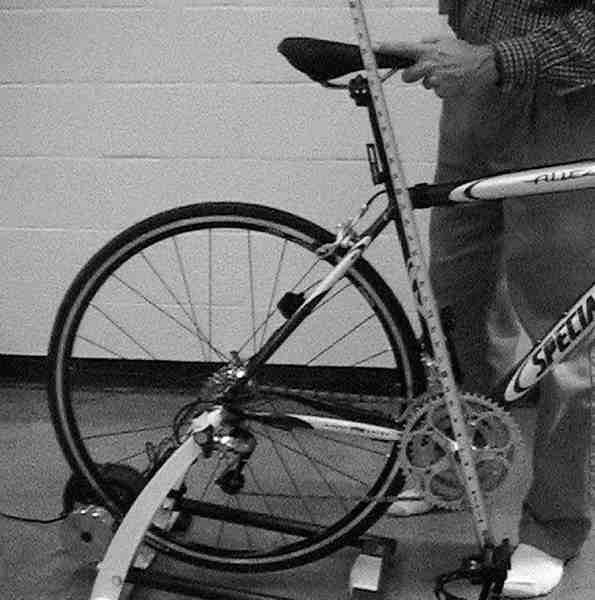Bruce Jayne
Preparation for your VO2 max Test
So that we are able to get valid results and perform tests efficiently please note the following:
- Do not eat or drink any fluid with caloric content for 3 hours prior to your test. If you do have something to eat more than 3 hours before your test, then it is advisable to keep the amount modest and consume light food stuffs that are readily digested. Also avoid consuming any significant amount of caffeine for more than 4-6 hours before your test. Because you may be quite hungry by the time we get done with you test, you may want to bring a snack and something to drink right after we are done.
- Bring your own cycling clothing, shoes and and a reasonable size towel to place on the floor to catch your sweat.
- The safest thing is to bring your own pedals. Sometimes pedals are difficult to get off your bike. If so, just bring your whole bike in, and we have a monster pedal wrench that we can use to take them off. We do have 2 sets of Speedplay pedals, one set of Shimano SPD SL pedals, and one set of Shimano SPD pedals with a mountain bike type style that does not seem to fit all SPD cleats. However, realize that if you are coming in with a large group it will be unpredictable for who needs what type of pedal at what time.

4. At home measure (in inches), write down and then bring in the distance from your saddle to your pedal measured along the seat tube from the top of the saddle to the top of the lower pedal spindle on the lower crank arm when it is parallel to the seat tube as shown in the figure to the right. This is NOT the conventional way of measuring bike size. However, this measurement will allow us to set up our bikes to fit you. We have four bikes in the lab. One bike is a a 50 cm size (conventional measurement of frame size) bike with a horizontal top tube. We also have three bikes with sloping top tubes, for which the conventional frame sizes are 52, 56 and 58 cm. Because of the manner in which we can vary saddle height, these bikes can be thought as having a size of plus or minus 3 cm or so. For example, I normally ride a 53 cm bike and I can comfortably ride either the 52 or 56 cm bikes in the lab. We have a very long seat post for all bikes including the 58 cm, and we have had some individuals well over 6 feet tall ride the largest bike comfortably. If you are coming in as part of a group you should coordinate the times of your test so that each of the individuals being testing simultaneously will be have access to a bike with the appropriate size.